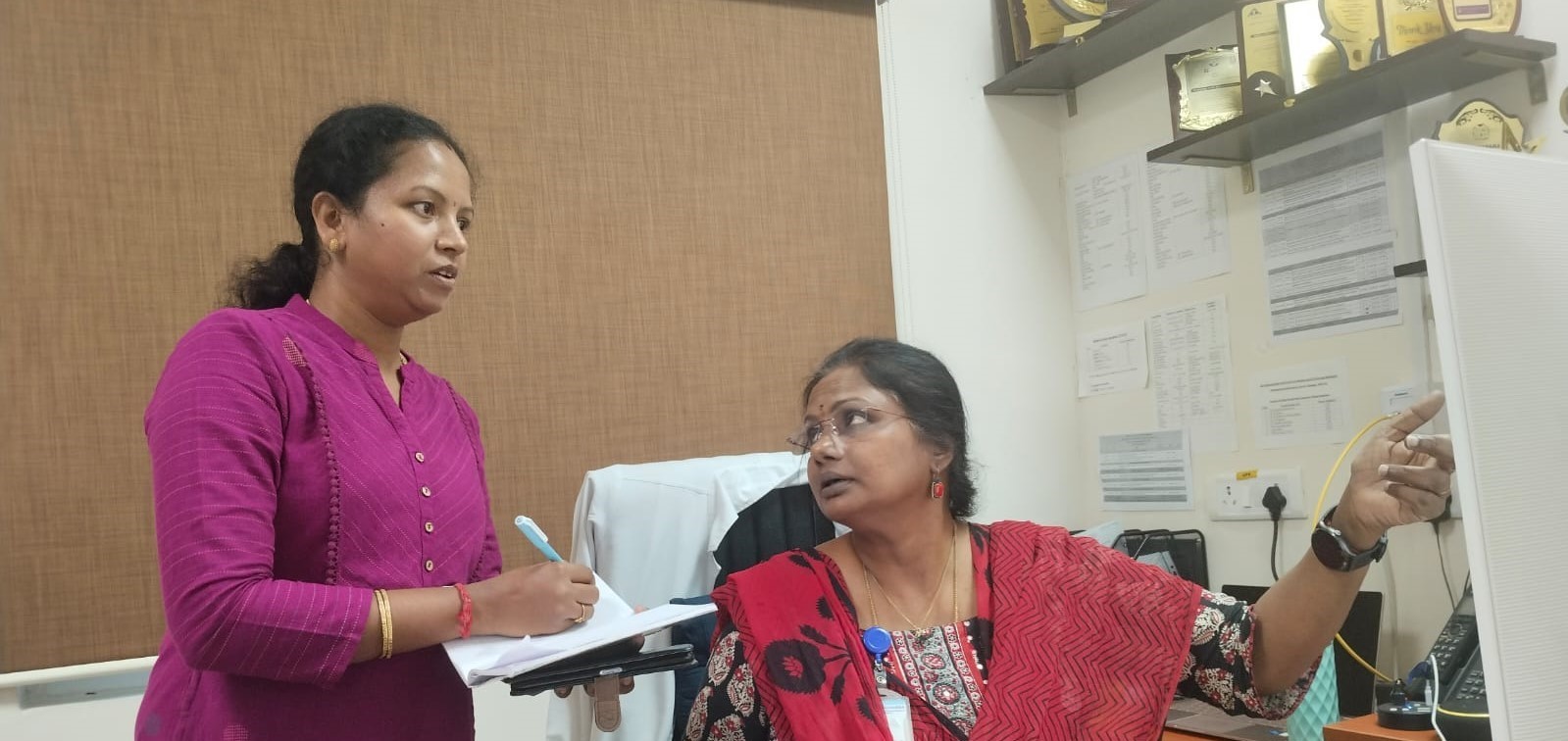17 April 2025
In January this year members of a team studying the health impacts of heat were demonstrating the use of a wet bulb globe thermometer in a participant’s home in peri urban Haryana, when they were interrupted by a visibly agitated house owner Kanhai Lal1. Though the team tried to explain the purpose of the study and the use of temperature measurements from the instrument, Kanhai Lal would have none of it. Convinced that the globe thermometer was in fact a recording device, clandestinely capturing evidence to penalise him for construction irregularities in his house, he ordered the team to vacate the premises immediately. While threatening to evict his tenant, the study participant. The researchers’ attempts to allay Kanhai Lal’s suspicions by way of an introduction to the study, a letter and identity cards proving the team’s affiliation to the local government hospital were met with disbelief- “They don’t have the time to attend to us when we come to the hospital, and you want me to believe the hospital has sent its people? All the way here? To our home? To enquire how we are faring?” There was no mistaking the contempt in his tone.
The incident offered us a glimpse of the distrust in the medical establishment among ordinary people in India and the distance at which medical research was from their lives. The disconnect is reflective of the now widely documented failure of the health service system to provide accessible, respectful, good quality care to those who are both poor and unfamiliar with the dominant culture of science and medicine. Coupled with the divide between doctors/scientists hailing from backgrounds of socio-economic and cultural privilege and the rural and urban poor they serve; this failure only contributes to deepen the existing fissures. In this context, community engagement offers an opportunity to build trust and have lay people’s voices reshape knowledge production in public health to respond to their needs.
Gaining traction post 2010, in the United States of America, community engagement (CE) was seen as the answer to a crisis of faith that the American public was having in the medical care and research establishment (Holzer et al, 2014). Ethnic minorities and indigenous communities were delaying seeking healthcare and had lower participation rates in research studies. Underlying the delays and non-participation, were people’s suspicions of potential physical harm that they associated with biomedical research interventions and fears of being saddled with financial liabilities that seeking medical care could invite. Existing research also pointed to the slow uptake of scientific evidence, which public health commentators and some scientists felt could be remedied by developing channels of communication with practitioners and communities. Community engagement thus came to be proposed to rebuild trust through “inclusive participation”, “mutual respect of values, strategies, and actions” and “authentic partnership” (Ahmad, 2010). This choice to share power is a departure from the mainstream approaches that tend to emphasise education of marginalized populations in a bid to get them to accept biomedicine or other development related scientific interventions. It underlines the relationship with the ‘research participant’ as one of shared power and consultation in decision-making in the research process- a reminder of the critical need to shift from ‘the expert knows best’ position. This move to engage communities however cannot merely be a utilitarian attempt to maintain the relevance of science. The right of non-experts to know and decide what is good for their bodies, minds and emotions, irrespective of who or how ‘aware’ they are, and irrespective of the expertise of scientists, has long been established starting with the Nuremberg Code (1947) followed up in the Belmont Report (1979) and other discussions on bioethics.
In the endeavour of scientific knowledge production, community engagement and involvement invites us to interrogate how we see the relationship between knowing and decision-making in public health research. What kinds of knowing qualify one to make decisions about interventions for the improvement of lives and health of communities? Is our ability to decide premised on knowledge that draws power primarily from its allegiance to ‘science’; or lays claim to superiority based only on what the scientific establishment recognizes as rational and logical reasoning? What is the place of knowledge acquired through individual and community experience of health and illness in various stages of research decision-making? What does it mean for us to respect values and ideas of communities? How may we prevent this exercise of engagement from lapsing into tokenism? Or one that fetishises experiential knowledge of communities. The imperative of CE pushes for a two-way engagement. It asks of us as scientists to contend with the fact that decisions about health and health care seeking by communities take place in a hierarchically ordered social space. In Indian society marked by growing inequality, this social space has long been dominated by the upper caste, urban, Hindu, heterosexual, university educated, English-speaking, white-collar professional or business owning, propertied male in the productive age group. The scientific and medical establishment is populated by such individuals or those sharing several of these attributes whose privileges lend them the power of being and defining the ‘normal’. This ‘normal’ is also who health care delivery is directed towards; and is the reference point for defining what constitutes a rational, reasoned response to challenges posed by ill health or the threat of disease. However, majority of the Indian population consuming health care lies outside this narrow range of the norm. For this majority, everyday experience is shaped by the indignities of waiting, being disregarded, humiliated, looked through and spoken down to in the government office, at the village well, in the workplace, at the place of worship, at the ration shop and is also mirrored in the encounters with personnel in the health service system and the research establishment (Subramani, 2025). The acts of disrespect are not isolated experiences faced by individuals but have been witnessed collectively as a community and across generations. The knowledge and anticipation of these repeated indignities that are difficult to articulate, are thus a critical ingredient in the calculations of entitlement, explanations of illness and the choice of treatment made by those from marginalized communities while responding to ill health.
From our vantage points of privilege, lay explanations appear fantastic and superstitious and health seeking actions of ordinary people could be characterised as ignorant, passive, non-compliant and regressive. To develop mutual respect for values, ideas and strategies, of participating communities and individuals, then seems a tall order to meet. What then does an ethical practice of community engagement demand of us?
To begin with, it is not just getting the community to engage with us. It requires us to engage with communities- to ask what shapes the rationality that informs seemingly mundane and at times ‘irrational’ acts of healthcare seeking. If behaviours related to health and healthcare seeking are historically shaped responses to the hierarchically organized society in places that we call our field sites, an ethical practice of community engagement requires us to attend to the context that communities are embedded in. Second, to answer the ‘why’ of healthcare seeking behaviours researchers need to reserve judgment and pay attention to what people say and what people do, while acknowledging the ways in which the scientific establishment may be implicated in the hierarchies that shape people’s imaginations and responses to ill health.
——————————————————————–
This blog has been written by Dr. Chris Mary Kurian.
About the author: Dr. Chris Mary Kurian is a Senior Research Fellow at the George Institute for Global Health and a Fellow in the New Research Leadership Program of the NIHR-GHRC. She leads the qualitative research component in the Heat in Pregnancy- India Project- a collaborative study that examines physiological impacts and adaptation to extreme heat among pregnant women from marginalized communities in India.
This research was funded by the NIHR (Global Health Research Centre for Non-communicable Diseases and Environmental Change) using UK international development funding from the UK Government to support global health research. The views expressed in this publication are those of the author(s) and not necessarily those of the NIHR or the UK government.






